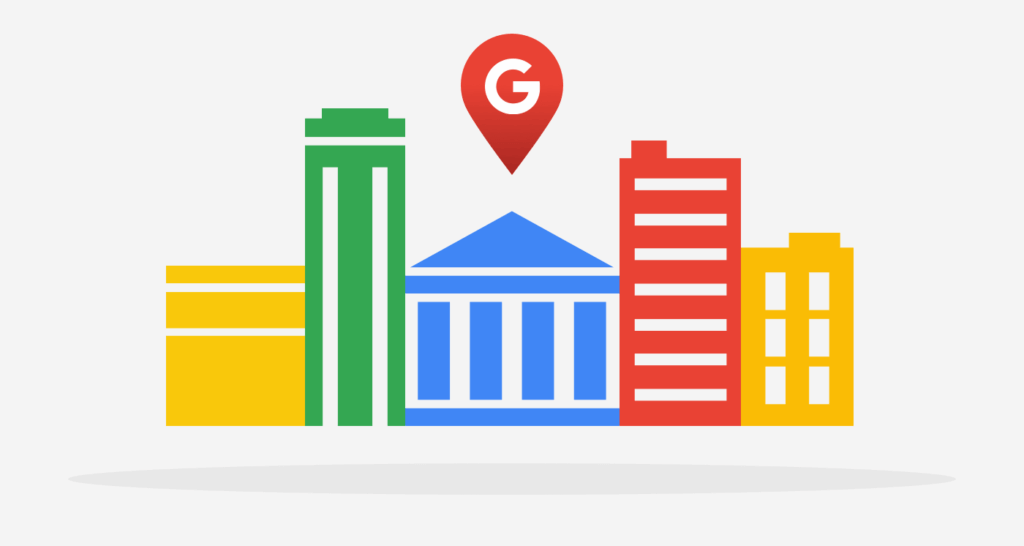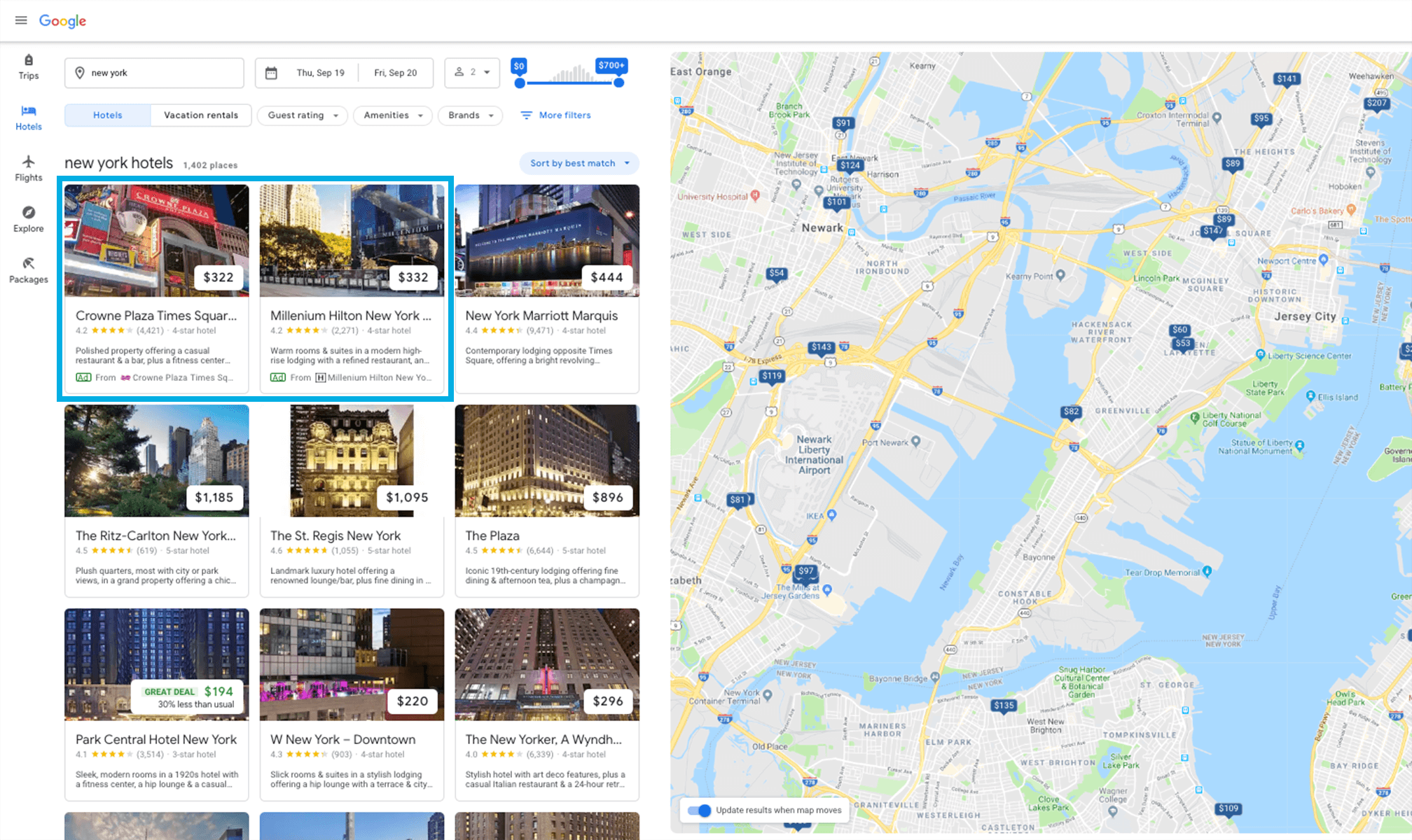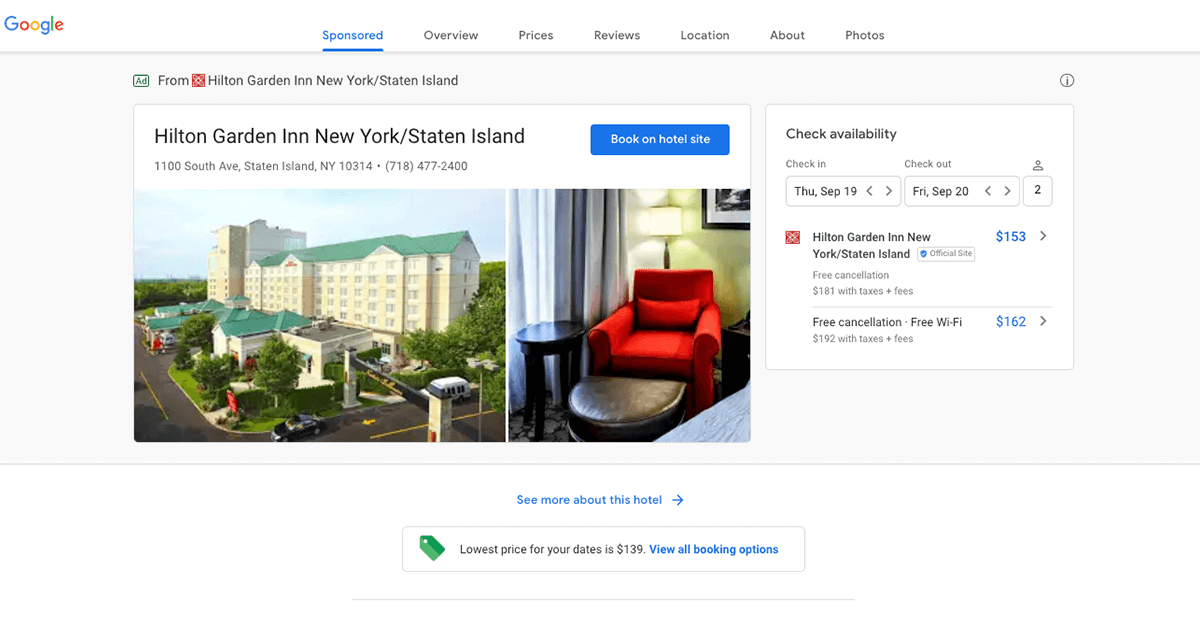
After a brief appearance during 2018, the long-awaited and high-impact product from Google, Promoted Hotels, is back on the front pages of Google Hotel Search.
NB: This is an article from Koddi
Google continues to increase its efforts to move up the funnel across the travel industry and is now, once again, putting advertisers in the driver’s seat. Within the framework of the updated hotel search experience, advertisers are able to place their properties at the top of destination level searches to influence users before they make their decision to book.

In an otherwise organic rank list, Google provides one to two ad placements per listing. The Promoted Hotel placements are not only featured in the top positions above all organic rankings but also provide prominent brand placement as well as advertiser pricing. Up to fourteen properties are displayed on the first page of results, but only three (two of which are Promoted Hotels) are fully visible without scrolling down the page. This makes the placement extremely valuable to advertisers with a focus on mid-funnel visibility and brand awareness goals.
What’s New to Promoted Hotels?
Sponsored Page
After clicking through the promoted placement, users are taken to the new ‘Sponsored’ page where they are greeted with a streamlined, book-first hotel information display. Here, the user retains the ability to alter check-in/out dates and number of guests. Simultaneously, the advertiser is able to display additional booking options for the selection, like ‘Free Wi-Fi’ shown below in our example. The user can also click-through the top photos to gain a better physical understanding of the rooms, amenities, and location. This update keeps the previously available tabs and provides the option to “Book on hotel site” at the top level of the page across all tabs.

Filtering
The user’s ability to filter continues to expand, including guest rating, hotel class, amenities, brands, and deals. The order of the organic and promoted listings changes with the update of any search variables, including filtering. Selected by default, moving the map on the right side of the screen will update the listings as well. All search variables and filters retain the Promoted Hotel placements except ‘amenities’ and ‘brands’. These placements also drop off when the user selects a different sorting rule other than ‘best match’, such as ‘lowest price’ or ‘highest rating’.
With filters, the user gains more control in the destination search experience, and this added benefit is likely to draw increased and reoccurring traffic. Included alongside filters is the ability to switch between ‘Hotels’ and ‘Vacation rentals’ listing options. The increasing popularity of vacation rentals can draw consumers away from hotel stays, but within the Google experience, a user can quickly switch from searching through vacation rentals back to hotels. Advertisers stand to profit from immediate prominent brand placement and price availability seen by the user operating within the Google Hotel Search experience.
Explore Sidebar
The new sidebar addition to the user’s experience increases the value of these placements by providing an easier solution for one-stop shopping behavior. The Explore tab allows the user easy access to a travel guide, a ‘things to do’ page, and a map-guided ‘day plans’ page. In providing these planning resources, Google attracts even more traffic towards its upper funnel and is just a click away from the Promoted Hotel placements. The traffic not only increases in volume but also in intentionality towards specific destinations. The same can be said for the value of adding the flights and packages tab. With the ever-increasing popularity of the Google Flights product, the ‘just a click away’ value of the hotel tab cannot be overstated.
High-Value Use Cases for Promoted Hotels
Keeping hotels running continually on this renewed placement adds extreme value overall, but Promoted Hotels can also be used to boost visibility and increase site traffic in specific use cases. The biggest overall use case here is brand presence. When you take into account the new brand-forward placement design, the placement location, and the increasing levels of traffic, this becomes one of the easiest visibility plays to target within the Google Travel experience. Advertisers can use this advantageously to promote hotel openings or renovations, special deals, or during periods of high vacancy. In the past, we have seen Google experiment with pinned properties in the hotel search layout. It’s possible this could become the new format for top Promoted Hotels placements in the future, propelling the visibility and booking potential of these promoted properties even further.




